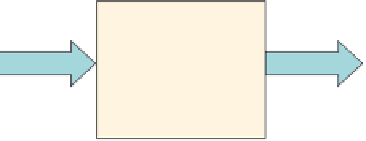Environmental Engineering Reference
In-Depth Information
Each study asks a more refined question that in turn dictates the need to resolve addi-
tional components and processes of the ecosystem. The art of science in this case and
others is to ask the question in the most interesting and creative way and to include the
necessary components needed to resolve the question. In the early stages of understanding
whether lakes are organic carbon sinks, the first study might be the most interesting and
lead to results that in turn would indicate the second and third studies would be worth
pursuing. The flexibility to include or not include particular components of an ecosystem
is dependent on the state of understanding in a particular area and goals of the research
effort.
The inclusive property of the ecosystem concept is not a weakness but a strength when
scientific work is carried out with clear questions and objectives. This property forces
investigators to consider both biotic and abiotic processes, as in the calcium study of
Hubbard Brook watershed where purely chemical (weathering) and biological (calcium
uptake and storage) processes are both critically important. Inclusiveness in ecosystem
research also means that important inputs, outputs, or fluxes are considered and encom-
passed in a study and not ignored. Inclusiveness is sometimes associated with the mantra
“everything is connected to everything,” a saying often considered as a general lesson
from ecology. Everything, however, is not equally important and effective research defines
the most important entities and processes for a given scientific problem. Inclusiveness can
become a difficulty when researchers specify too many potentially important entities and
processes. The system is reduced into too many component parts making it very difficult
to understand the interactions. The inclusive aspect of the ecosystem concept, however,
when used well, promotes an integrated perspective. This perspective in the company of
good questions and effective research strategies aids ecosystem research.
FIGURE 9.5
Illustration of
three hypothetical studies that
include different components for
resolving questions related to the
net loss of organic carbon in lake
ecosystems.
(a) Study 1
Inputs
Outputs
(b) Study 2
Sedimentation
Inputs
Outputs
Burial
Respiration
(c) Study 3
Sedimentation
Inputs
Outputs
Burial















